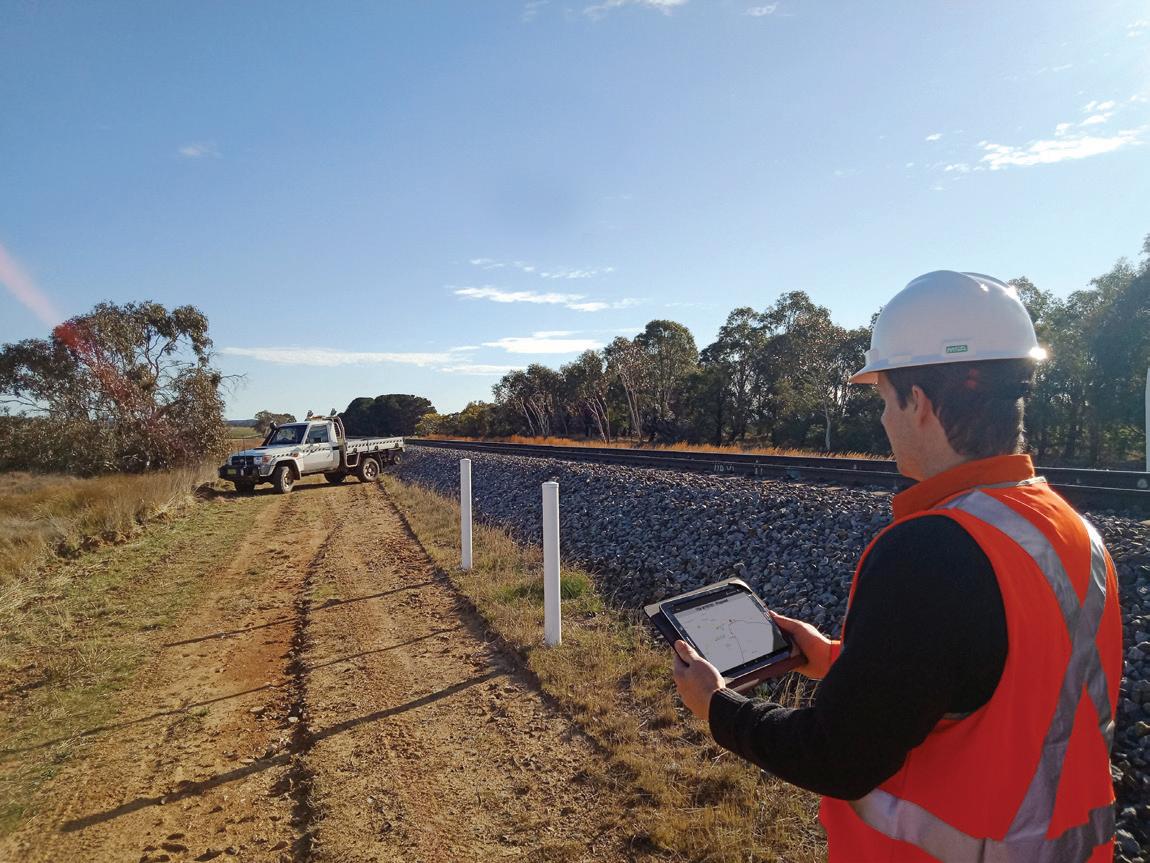
7 minute read
DIGITAL INFRASTRUCTURE: THE INFRASTRUCTURE OF THE FUTURE
by Dr Ian Oppermann, NSW Government Chief Data Scientist and Industry Professor at University of Technology Sydney
With recent changes to how people live and work due to the COVID-19 pandemic, the move away from physical assets and towards cloud-based infrastructure is more significant than ever. Here Dr Oppermann explores a future world that is more digital and connected, and the impact of smart infrastructure, digital twins, and data privacy and security.
Advertisement
Many governments around the world have set smart city goals and funded pilot projects, but the reality is that little progress has been made in many countries. Challenges to these goals include the diversity of stakeholder interests, the complexity of coordinating planning/ construction/operation across stakeholders, and importantly, the lack of comprehensive digital twins of physical environments, and the lack of clear, data-driven outcomes frameworks.
Digital twins offer the potential to plan, model and optimise during all phases of smart infrastructure lifecycle and use. Outcomes frameworks allow the goals of smart cities to be described and measured. Smart cities are ultimately dependent on data-driven frameworks, indicators and models gathered from those who use the places and infrastructure of cities. Use of peoplecentric data needed to measure, model and analyse smart cities creates the final major hurdle in the form of privacy. All of these challenges must be addressed to make real progress in smart cities.

COVID ACCELERATING DIGITAL
Over dinner at an appropriately socially distanced hotel restaurant recently, I watched background footage of the foundations of Canberra being laid out and the growth of the city over the course of the 20th Century. It was stunningly old fashioned. Everything about the pomp and ceremony, the construction process, people learning to use these roundabout things was worthy of documentary. We are now much more digital, more connected and more online. We are living in the future.
The COVID-19 pandemic has taught us just how much of that last sentence is true. We rapidly jumped online rather than drive to work or drop the kids at school. We grappled with congested telecoms networks rather than congested roads. We switched between Teams, Zoom, Skype and Webex in seconds rather than fly between Sydney, Melbourne, Brisbane or Canberra for the day. We discovered some bottlenecks, but we largely went online and digital.
Productivity has arguably increased for “remoteable” professions. The network externalities of school start times, work start times, and the need to be seen to be “at work” changed. We survived, and we even started to understand some of the reasons why it has been so hard to be smart with our use of cities as we switched from moving atoms (us, our cars, our public transport) to moving bits (our voice, files, video feeds).
COVID was a major interruption to the steady progress of change towards the connected, online, digital future. The major drivers of this change are still coming from the intersection of a growing/ aging/urbanising population, a changing climate, the need to respond to an increasing number of global challenges (including pandemics), and our expectation of an ever-improving quality of life. These are challenging factors to reconcile and must be met with ever greater productivity and technological enhancements.
Our present, and future, are digital, hyper-connected and critically dependent on technology. For decades, most economies have been transforming towards a service dominated economy and our services economies are increasingly digital, online and driven by data. In all sectors, services are increasingly created, delivered and consumed via digital means, driven by the increasing adoption of online, mobile and digital technologies.

Recent years have witnessed dramatic changes in every aspect of our lives, from the way we consume music, watch movies, book holidays or choose hotels. Sometimes less obvious, there are dramatic changes underway in every industry, and in government, driven by changing consumer expectation, reduced barriers to new entrants and an increasingly borderless world of information flow.
The compounding factors of connected, digital and AI-driven “smart” means the rate of the change is actually accelerating. Hold on tight, these are now the “good old days”. We will never see the pace of change this slow again.
A DIGITAL TWIN
Digital twins of physical environments help us plan, model and optimise real world services. A smart light in your home, driven by a bit of AI, turns on and off as you move around the house, creates a simple digital model of your home and lighting use, and supports more efficient use of energy.
It will however also collect de-identified data about when you are home, which rooms you use and when, if there are other people in your home, and where in your home you spend your time. Within this de-identified data, there are insights about you and your relationships, habits and preferences.
In aggregate form, this data can be used by a service provider to optimise energy use and deliver more efficient lighting services to a suburb, by a smart grid to match energy demand to energy supply, or by a smart micro energy service provider to make best use of spot energy prices.
The benefit is the ability to locally optimise or individually personalise services based on personal preference, as well as to optimise the wider network for users and providers.
This idea of digital twin models of the home or office incorporate an ever-increasing range of “smart” devices (phone, TV, scales, toilet, refrigerator, watch) and “smart” environments (home, workplace, city). Increased efficiency, improved effectiveness and greater personalisation can present enormous benefits.
If these datasets are linked in a digital twin of the physical world, the resulting merged dataset may contain a great deal of personal information (PI), possibly enough to re-identify the individuals represented therein – making that data personally identifiable information (PII). How this data is used, by whom, and for what purposes determines risks and concerns. In many economies, it may force service providers and operators to rethink governance models to support regulatory requirements such as GDPR.
The challenge is quantifying the amount of PI in a dataset at any point in time and in any given context, and developing threshold tests for when an individual is reasonably identifiable, while considering personal attributes, temporal and spatial aspects of data, and rich contextual environments.
PI VERSUS PII
The terms personal information (PI) and personally identifiable information (PII) are often used interchangeably in legislative frameworks and in technical literature. The question becomes, how many features must be linked before

4Tel
PI becomes PII for an individual known to be in a dataset? Context and rarity play important roles in the answer to this question. Future smart or “mobile enabled” services will compound the complexity of these simple frameworks as greater fidelity and range of captured personal attributes, greater resolution in time and space, and richer contextual considerations are harnessed to deliver services or optimise network performance.
As feature-rich 4G mobile becomes 5G (and by 2030 becomes 6G), an understanding of the degree of PI in potentially highly time varying, context rich datasets, will challenge what we mean by de-identified data and the risk of re-identification. Understanding these challenges will provide a basis to anchor principles-based data sharing and governance frameworks to help ensure new smart or mobile enabled services operate within the regulatory frameworks designed to protect us all.

AUSTRALIA HELPING LEAD THE WAY
Through work with the NSW Government, the Australian Computer Society, Standards Australia and many other groups, ways to measure PI in data are being developed. The work is still at an early stage, but international standards are being explored to develop data sharing and use frameworks based on an understanding of context of data use, its inherent sensitivity, and the level of personal information in the data.
It is early days, but the “Model T” tools developed so far show great promise for use in future smart services and smart cities. Stay tuned!
INNOVATIVE TECHNOLOGY SOLUTIONS FOR TRACK WORKER SAFETY
4Tel’s 4PTW solution provides additional risk controls for location assurance and communication to keep track workers safe.

For more information about 4PTW or other ways in which 4Tel are improving Track Worker safety visit www.4Tel.com.au










